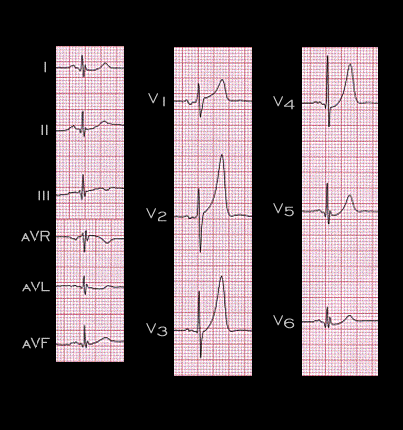
Hyperacute T wave changes are the earliest electrocardiographic manifestations of acute myocardial ischemia/infarction and may occur in the absence of ST elevation.
The accompanying ECG is from a 55 year old male recorded within one hour of the onset of retrosternal chest pain. The tall peaked T waves in leads V2-V4, although possibly still within normal limits, are consistent with the hyperacute T wave changes that occur in the setting of acute myocardial ischemia/infarction.
